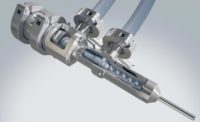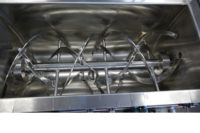

Some plant-level enterprise resource planning (ERP) systems consider quality as part of the inventory record. These systems typically refer to the specifications as "attributes" or "characteristics" of the lot. The quality data is either collected by quality management modules or imported from a separate quality system. The integrated quality and inventory information is used as either a single source of information to guide decisions or, in some systems, as a source to make automatic decisions.
If the information is available as a guide, the quality data is displayed along with the inventory data. A person can then make decisions on questions like which lots to blend to arrive at an acceptable starting point for a batch. For example, an available-to-promise (ATP) inquiry may allow users to limit the information to only those lots with a specific range of water content or solids. A foreman could then use this information to select the lots to blend for a particular batch.
Some systems also provide intelligence, following various rules that enable them to make automatic decisions. For example, a blended juice product recipe could require grape juice from 22 to 24 brix. The system can decide which lot or lots to use based upon the recipe, expiration dates and lot specifications. Further, some systems can work with multiple parameters and compensating ingredients. If, for instance, the percentage of solids is higher than the recipe dictates, the system can decrease the ingredient quantity and increase the amount of water.
Should your inventory information include quality specifications? Only if your ingredients' specifications vary within an acceptable range and you are frequently changing recipes to compensate for quality differences. If this is your situation, combining quality and quantity information into a single system can provide a positive impact.

